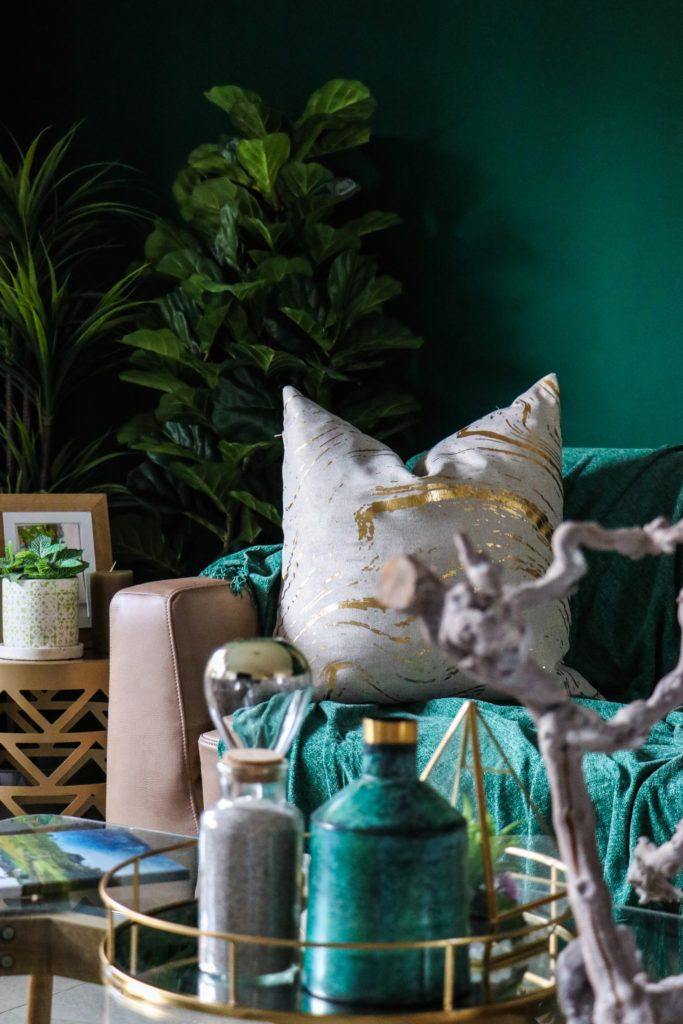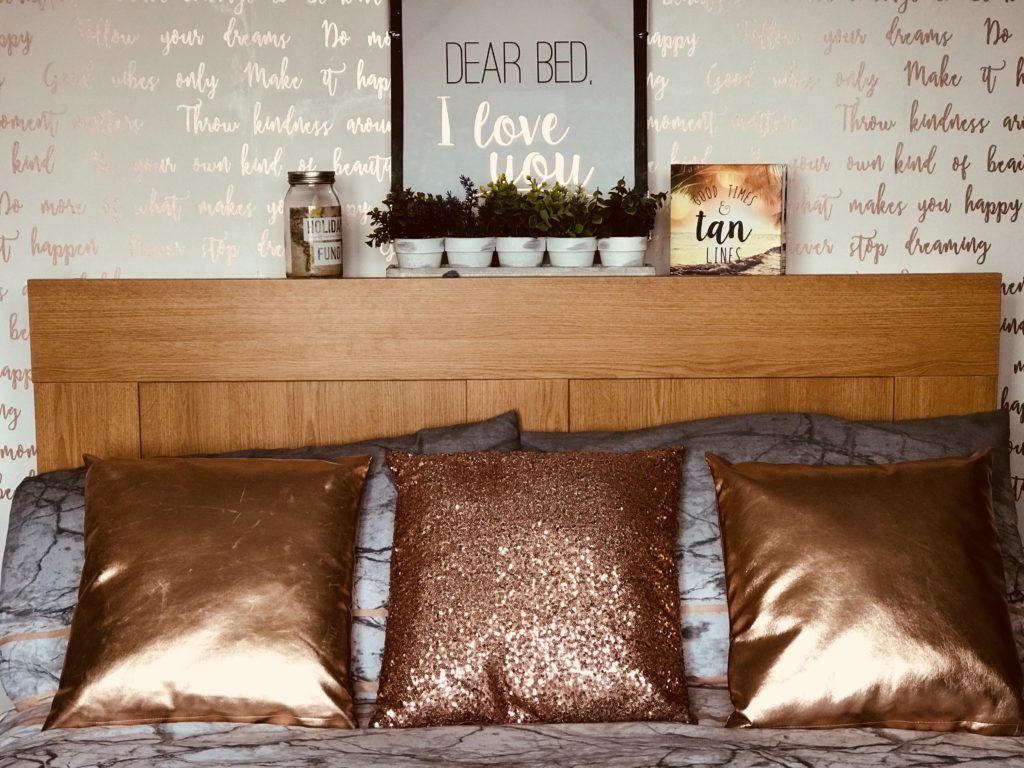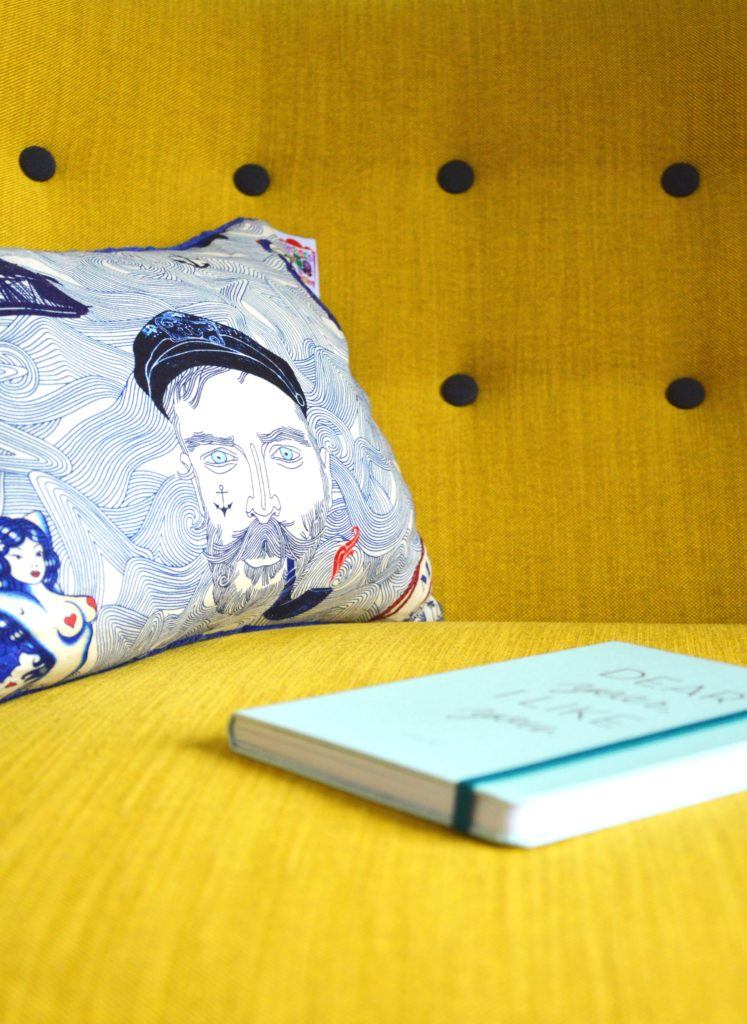Cushion covers are one of those fun, simple projects that every beginning sewist should try out. They’re easy to make, and great to have around the house!
While they can be crucial décor in a room, it can be hard to find the one cover to bring your room together. Shops can offer the same boring patterns, with the wrong textures and sizes.

There are shops online that let you create your own custom cushion covers, but those can be pricey, especially for something that you can do on your own.
And yes – you can make your own cushion covers even if you’re a complete newbie!
So, if you feel up to the challenge, bust out those threads and needles, and let’s talk about cushion cover making.
Choosing the Right Fabric for Cushion Cover Making
You can use pretty much any fabric for your cushion cover, but be mindful of how it will be used.
Allergies
Are you making a throw-pillow cover or a sleeping-pillow cover? Is it decorative or will people be resting their faces on it?
If the latter, avoid fabric that may cause allergies. These fabrics may include those with a great deal of loose fuzz, which can irritate the throat and nose.
Fabrics with coarse and rough textures can also irritate the skin. If you have the means, it’s best to go for hypoallergenic fabrics.
Fabrics made of natural, non-synthetic fibers are also a good bet. Good fabrics to choose from are linen, cotton, and silk.
Durability
Cushion covers are often subjected to a lot of rough handling. Whether they’re sat on, thrown around, or used as pillow, cushion covers need to be sturdy and durable.
Other than fabric that is free of allergens, it’s also best to choose a fabric that can stand a lot of presses and pulls.
Fabric that is thick and bulky can be unwieldy to work with, but can save you a lot of headache down the line. Upholstery fabric like wool and cotton blends can be great cushion cover choices.
Washable
Lastly, make sure your fabric is easily washable. Since it’s going to be around a lot of people, and possibly drinks as well, stains will be an unavoidable problem for cushion covers.
In that regard, choose a fabric that is stain-resistant, or at least one that you can easily throw in the wash or spot clean.
Cushion Cover Patterns
There are two main cushion cover patterns: the first is one with a zipper, and the other is an envelope design.
No matter the pattern you’re seeking, there are many designs online, whether they be from independent bloggers, fabric stores, or magazines.

When learning how to make a cushion cover, consider the cushion that you want for yourself, as well as the skill level that you’re comfortable with.
Below, we have two patterns to get you started.
How to Make Cushion Covers
Preparing Your Fabric
To prepare your fabric, wash it on its recommended setting, especially if it’s made of natural fibers. Then, iron out the creases.
In this way, you can be sure that your fabric can be measured accurately and handled better.
How to Make a Cushion Cover Without a Zipper
Beginners would do well learning how to make a cushion cover without a zipper.
The envelope cushion cover is a great pattern for this purpose, since you can simply insert the inner cushion without needing a special closure. While they look easy, zippers can be a challenge to new sewists.
Since it doesn’t have a fasten, this pattern is best for smaller cushions. If you’re using a larger cushion, it’s also possible to add a button or a small bit of velcro to secure the flap.
These steps are adapted from Hey There Home.
- Make your measurements
For an envelope cushion cover, you will need two measurements.
First, measure one side of your inner cushion. This will be Measurement A. Then, divide this measurement in half, and add five inches. This will be measurement B.

- Cut out your fabric
You will need to cut out three pieces of fabric for one cushion cover: one for the front and two for the back.
The front cover would be equal to Measurement A on all four sides. The back covers should have a width equal to Measurement A, and a length equal to Measurement B.
For example, cushions are often 20×20 inches; this means that your back covers should be 20 inches wide and 15 inches tall.
- Sew the edges
Sew the bottom edge of your top piece, as well as the top edges of your back pieces.
To do this, fold the fabric from about ½ an inch from the edge. Ironing it, as well as adding pins, can be a big help – especially for beginners.
- Assemble the pieces
First, lay down the front piece, good side up. Arrange it so that the pattern is going in the direction you would like for your finished pillow.
Then, lay one of the bottom pieces, good side down, on top of the fabric, lining up the edges from either the top or the bottom. Then, lay the last piece on top of this layer, good side down, on the opposite end.
Place a pin on all the edges to secure it in place.
- Attach all the pieces together
Sew the pieces together with a backstitch, giving a ½ inch seam allowance from the edges.
You can do this with a sewing machine, but it can be easily done by hand.
- Sew the edges
Finally, sew the edges to avoid fraying. You will need a zigzag stitch for this.
You can do this using a sewing machine, stitching so that the needle lands just off the outer edge of the fabric. You can also do this by hand.
- Add your pillow insert
Now all you need to do is turn your cushion cover inside out, and it will be ready for your cushion insert!
Here’s a video showing an example of how to make a cushion cover without a zip.
How to Make a Cushion Cover with a Zipper
While it is a bit more complicated than an envelope cushion cover, the zipper cushion cover is also perfectly doable by complete beginners.
Love to Sew gives us two variations on the zipper cushion cover. No matter the type you pick, both of them do well in hiding the zipper from plain view.
Zipper Cushion Cover
- Cut out your fabric
Fabric measurements should be equal to the pillow insert that you plan on using. For extra plump pillows, add some allowance on all sides. Cut out two pieces.
- Arrange the pieces
Lay down the first piece, good side up. Then, lay down the second piece, good face down.
Align the edges. Then, lay the zipper, good side down, at the middle of the bottom edge of your fabrics.
Mark out where the zipper starts and ends on your fabric.
- Sew the zippered edge
With a ½ seam allowance from the mark, straight stitch from the edges to the mark. Then, stitch as loosely as you can between both marks. We will need to remove this stitch later.
Then, lay the zipper down again. Pin it in place. Open up both pieces of fabric, still face down.
Stitch the zipper using a zipper foot along both edges. Then, remove the loose stitch where the zipper is.
- Stitch the edges
Stitch the rest of the edges of your cushion cover. Finish the seams to make sure that the fabric doesn’t fray. Then, flip the cover inside out, and you’ve got yourself a new cushion cover!

Invisible Zip Cover
If you’re buying a cushion cover from the store, the zipper is often hidden behind one seam. This variation is a bit trickier than the covered zipper technique, since it requires a few tweaks to hide the zipper.
First, you will need an invisible zipper. This zipper will have finer teeth than your regular zipper, which means that it can be easily hidden inside of your pillow seams.
This zipper also needs to be shorter than the length of your pillow, so you may need to shorten the zipper. Second, you will need a sewing machine with a zipper foot or an invisible zipper foot.
For complete beginners who have yet to own their first sewing machine, this may be a deal-breaker. Of course, it’s always possible to borrow a sewing machine from a friend.
While it may seem daunting, a few tries at using the zipper foot is all you need to get a hang of your new machine.
To make this invisible zipper cushion cover, these steps are adapted from Katie of Sew Katie Did.
- Cut out your fabric pieces
First, cut out two pieces of fabric. Their measurements are equal to the measurements of your inner cushion.
Then, align your zipper to the front piece, pinning it face down on the good side of the fabric, at the bottom edge.
Stitch the zipper. Check out the tutorial from Sew Katie to see the specific feet she uses for both zipper types.
- Sew the zippered edge
After stitching the zipper to the front fabric piece, you can now align it to the back piece.
Align it right side down on the right side of the fabric, at the bottom edge, and sew.
- Finish the edges
Now, it’s just a matter of stitching along the rest of open edges of the cushion cover.
Then, finish off the seams. And you now have your invisible zipper cushion cover!

Making a Cushion Cover from Old Shirts and Scraps
Many people get into sewing because it’s a great way to save money. With that in mind, what better way to save money than to reuse what you already have lying around?
A cushion cover is a great use for scrap fabric or clothes that you don’t use or wear anymore. All that material can be revamped in your décor.
Using Scrap Fabric
Using scrap fabrics may be too complicated for beginning sewists, but it’s still doable.
If you choose extra pieces of material, you will need to stitch the pieces together until they form a piece large enough for the cover.
This works well for smaller pieces of fabric, as more stitches would make the cover more durable.
Using Old T-shirts
Using old t-shirts is a great way to recycle unused clothing. If you have a shirt that you just can’t throw away because of the memories it holds, upcycling it into a cushion cover is a great way to keep it around. Plus, you can hug it close while reminiscing!
Another added benefit of old t-shirts is that they’re generally less work than the usual cushion cover pattern.
The structure of t-shirt lends itself to fewer stitches when it’s upcycled. Because of that, it’s a much friendlier approach for beginners and allows people to sew the pattern easily by hand.
This tutorial from Georgina Burnett walks us through turning an old shirt into a cushion cover. We start by washing and ironing the shirt, as you would any fabric for a sewing project.
Then, turn the shirt inside out. With dressmaker’s chalk, outline the measurements of the cushion around the middle of the shirt. Pin both sides of the shirt. Cut around the shape, and sew!
This pattern is great to use with button-down shirts, as the buttons are ideal for letting you change the inner covers. As a plus, they’re a nice touch on the pillow itself.
If you use shirts that aren’t button-downs, you can add a zipper, a button, or a bit of velcro, in the middle.
This video shows an example of how to make cushion covers with a shirt.
Conclusion
Cushion covers are a great way to add fresh décor to a room, and they’re an incredibly fun project to make.
Since their design isn’t complicated, you can trial and error your way through the process and pick up skills as you go. As a bonus, you can make them out of pretty much anything, with only a bit of stitching.
So, pick out your favorite pattern and prepare your fabric; your new cushion cover is waiting for you.
What are your favorite cushion cover patterns?

For the no zipper cushion cover, you mention in the video that measurements for larger cushions are “provided below”. As a novice sewer, I’m trying to make a larger one – 50cm by 50 cm.
Also if the cut pieces are the exact measurement of the cushion insert, that does not take into account the seam allowance. Is that on purpose?
Thank you